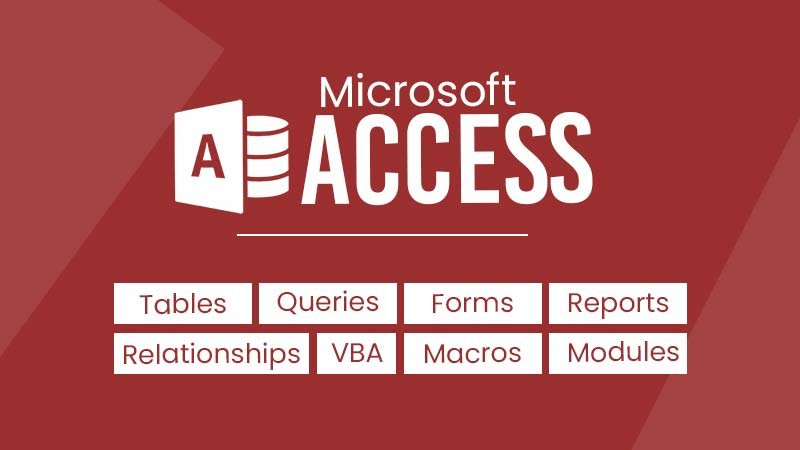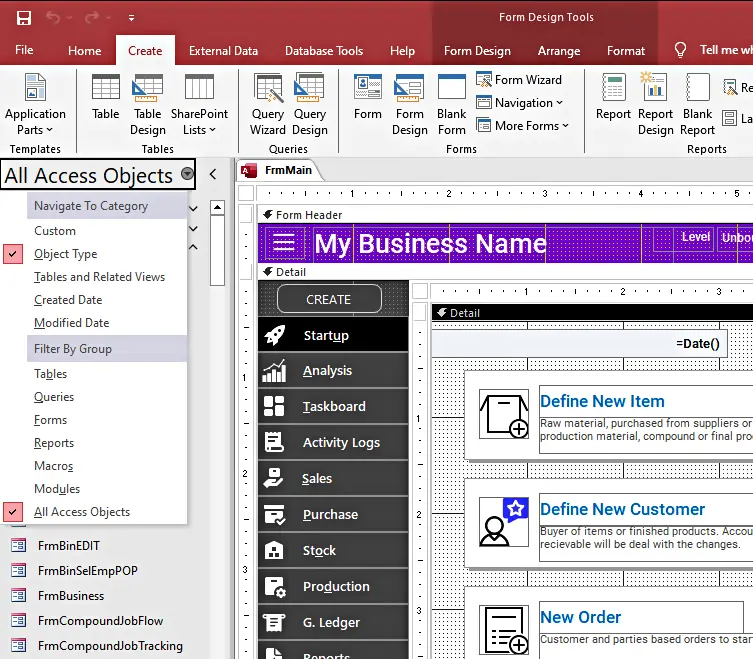Physical Address
304 North Cardinal St.
Dorchester Center, MA 02124
Physical Address
304 North Cardinal St.
Dorchester Center, MA 02124

Microsoft Access is a well-known, user-friendly database management system produced by Microsoft, seamlessly integrated into the Windows environment, and is part of the Microsoft 365 Office suite. Microsoft Access Database is a popular choice for small business management, where it can be used to manage financial transactions, track sales & inventory, and generate reports. Microsoft Access combines Microsoft’s relational Jet Database Engine with software development tools and a graphic user interface (GUI). It was first released in November 1992, so it’s been around for a while. In the rapidly changing, fast-paced IT world, we can best describe a 30-year-old program as “venerable.”

As businesses continue to grow, the amount of data being generated increases significantly on a daily basis. This has led to a lot of attention being focused on various database tools, as having the right tools can provide the most efficient means of working with the current massive data glut and making things more manageable. This versatile tool organizes, analyses, and visualizes the data to empower businesses across various industries which is described later in this article.
As a part of Microsoft Office Suite, It has a different structure than Microsoft Excel.
Microsoft Excel is a spreadsheet utility based on worksheets and cells to perform relatively simple calculations and apply formulas for individual projects.
Microsoft Access is the first Widely-used mass-market Database Program for Windows platform
Tables in Access are somehow like the cells in the Excel worksheet with headings columns and rows.
Each table field contains a specific data type like text, numbers, currency, date, time, object, etc. Defining the format of each data type category makes Access more specific and summarized. The ID-based primary key field is used to quickly associate data from multiple tables and combine that data in a meaningful form.
The data in one table is related to the data in another table or tables. The relationship is used to cross-reference data information between tables. This can be done simply by drag and drop. In general, tables can be related in one of these three different ways:
One-to-one relationship
One-to-many relationship (mostly used)
Many-to-many relationship
Forms are the handiest source for entering information in database tables. Unlike Excel’s spreadsheet, forms are the best way to enter data without showing the complete data.
Reports offer a way to view, format, and summarize the final form of data in the Access database to share print or to export in different other formats like PDF, HTML, etc.
Macro is a tiny tool that allows you to automate tasks and adds some functionality to the forms and reports.
The coding part is written in VBA code where user-defined functions and global variables are declared to use anywhere in the database.
The database projects are the practical implementation of some of the following frequent uses of Microsoft Access:
MS Access is a popular choice for small business management, where it can be used to manage financial transactions, track sales & inventory, and generate reports.
MS Access is used to store large amounts of data in an organized and efficient manner and retrieve them in the form of reports of export to other formats. It allows you to create tables, queries, forms, and reports to manage data.
MS Access is commonly used for inventory management, where it can be used to track items, their location, and other important details. It can also be used to create purchase orders and track sales.
MS Access can be used for customer relationships, where it can be used to store customer information, track interactions, and generate reports.
MS Access can be used for project management, where it can be used to track tasks, milestones, and resources. It can also be used to generate reports on project progress.
MS Access can be used for HR management, where it can be used to store employee information and their salaries and benefits, track performance, and generate reports.
MS Access can be used for event planning, where it can be used to manage guest lists, track RSVPs, and generate reports on event attendance.
Hence almost every small to large business organization uses spreadsheet applications like Microsoft Excel for the basic data tasks and calculations. On the other hand, Excel Forms are not useful for users in the sense of data entry and retrieval functionality due to limitations such as the lack of multi-user interaction with the same file and data security concerns.
Here comes Microsoft Access which manages data entry integration with the Excel spreadsheets as the backend operation.
The above-described feature is one of the most likely other powerful backend server table integrations like SQL, and MySQL.
The most brilliant feature of Access is the data Split functionality which splits the backend tables and front end with separate files and integrates between files. It makes the database more flexible with these outstanding features:
Look at some of the other stunning features of Access below:
Yes, it has a multi-user integrated functionality that allows access and user for multiple users at the same time. Separate usernames and passwords can be generated through programming for each user. The same file can be shared with multiple users giving them access to the forms and reports. Although multiple users can have access to and change the data from a shared network-based drive.
Yes, due to a backend and frontend split functionality, whole data files can be backed up either directly from Microsoft Access pragmatically or the server end. The frontend application interface is lightweight and it can always be.
Yes, an example of SQL Server hosting to integrate SQL tables with Microsoft Access database application, is possible with no issues at all. Many Microsoft Access-based databases now use SQL Server as a backend for data storage and retrieval. An internally equipped SQL Server is costly for small to medium-sized businesses, so they are now preferring the outsourced model which is cost-efficient along with the capability of online access.
Access database is less frequently reported as corrupt as compared to the previous versions. The newer updated version is more stable and reliable. In case of any corruption with the database, in most cases, it affects a single form or report. The most excellent thing about the Access database is that any type of corruption can be eliminated by just restarting the database.
The concluded summary is that Microsoft Access can be the premier choice for Windows-based database management. It can be a valuable tool for businesses of all sizes due to its user-friendly, strong features and seamless integration with Windows.
With Skillheader, you can be a master in building Microsoft Access databases through its practically implemented projects. Share your thoughts and join the Microsoft Access Database Management System tools projects section.